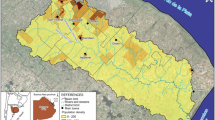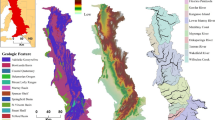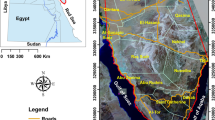Abstract
The delineation of flood risk maps is a fundamental step in planning urban areas management. This evaluation can be carried out by hydraulic/hydrological modelling that allows obtaining water depths and related flooded areas. In this way, it is possible to mitigate and contain the catastrophic effects of floods, which become more frequent in the last decades. These events result in losses of both human lives and assets. In addition, the growing availability of high-resolution topographic data (i.e. Digital Terrain Models - DTM), due to new technologies for measuring surface elevation, gave a strong impulse to the development of new techniques capable of providing rapid and reliable identification of flood susceptibility. In this study, two methodologies for mapping flood-prone areas in karst ephemeral streams in Puglia region (Southern Italy) are compared, highlighting how DTM-based technologies are a precious source of information in data-poor environments. Results are in perfect agreement with previous studies on similar areas, showing the marked influences of topography in defining flood-prone areas. These researches can also be useful in investigating a wider gamma of hydrological-related aspects, in particular with respect to the social behavior of communities.
Access this chapter
Tax calculation will be finalised at checkout
Purchases are for personal use only
Similar content being viewed by others
References
Di Baldassarre, G., et al.: Debates - perspectives on socio-hydrology: capturing feedbacks between physical and social processes. Water Resour. Res. (2015). https://doi.org/10.1002/2014WR016416
Gioia, A., Totaro, V., Bonelli, R., Esposito, A.A.M.G., Balacco, G., Iacobellis, V.: Flood susceptibility evaluation on ephemeral streams of Southern Italy: a case study of Lama Balice. In: Gervasi, O., et al. (eds.) ICCSA 2018. LNCS, vol. 10964, pp. 334–348. Springer, Cham (2018). https://doi.org/10.1007/978-3-319-95174-4_27
Iacobellis, V., et al.: Investigation of a flood event occurred on Lama Balice, in the context of hazard map evaluation in karstic-ephemeral streams. In: Gervasi, O., et al. (eds.) ICCSA 2018. LNCS, vol. 10964, pp. 317–333. Springer, Cham (2018). https://doi.org/10.1007/978-3-319-95174-4_26
Balacco, G., Totaro, V., Gioia, A., Piccinni, A.F.: Evaluation of geomorphic descriptors thresholds for flood prone areas detection on ephemeral streams in the metropolitan area of Bari (Italy). In: Misra, S., et al. (eds.) ICCSA 2019. LNCS, vol. 11622, pp. 239–254. Springer, Cham (2019). https://doi.org/10.1007/978-3-030-24305-0_19
Apollonio, C., Delle Rose, M., Fidelibus, C., Orlanducci, L., Spasiano, D.: Water management problems in a karst flood-prone endorheic basin. Environ. Earth Sci. 77(19), 1–15 (2018). https://doi.org/10.1007/s12665-018-7866-8
Fidelibus, M.D., Balacco, G., Gioia, A., Iacobellis, V., Spilotro, G.: Mass transport triggered by heavy rainfall: the role of endorheic basins and epikarst in a regional karst aquifer. Hydrol. Process. (2017). https://doi.org/10.1002/hyp.11037
Balacco, G.: The interrill erosion for a sandy loam soil. Int. J. Sediment Res. (2013). https://doi.org/10.1016/S1001-6279(13)60043-8
Apollonio, C., Balacco, G., Gioia, A., Iacobellis, V., Piccinni, A.F.: Flood hazard assessment of the Fortore River downstream the Occhito Dam, in Southern Italy. In: Gervasi, O., et al. (eds.) ICCSA 2017. LNCS, vol. 10405, pp. 201–216. Springer, Cham (2017). https://doi.org/10.1007/978-3-319-62395-5_15
Gioia, A., Manfreda, S., Iacobellis, V., Fiorentino, M.: Performance of a theoretical model for the description of water balance and runoff dynamics in Southern Italy. J. Hydrol. Eng. (2014). https://doi.org/10.1061/(ASCE)HE.1943-5584.0000879
Iacobellis, V., Fiorentino, M., Gioia, A., Manfreda, S.: Best fit and selection of theoretical flood frequency distributions based on different runoff generation mechanisms. Water (Switzerland) (2010). https://doi.org/10.3390/w2020239
Gioia, A.: Reservoir routing on double-peak design flood. Water (Switzerland) (2016). https://doi.org/10.3390/w8120553
Tarantino, E., Novelli, A., Laterza, M., Gioia, A.: Testing high spatial resolution WorldView-2 imagery for retrieving the leaf area index. In: Third International Conference on Remote Sensing and Geoinformation of the Environment (RSCy 2015) (2015). https://doi.org/10.1117/12.2192561
Tarantino, E.: Monitoring spatial and temporal distribution of sea surface temperature with TIR sensor data. Eur. J. Remote Sens. (2012). https://doi.org/10.5721/ItJRS20124418
Aquilino, M., Novelli, A., Tarantino, E., Iacobellis, V., Gentile, F.: Evaluating the potential of GeoEye data in retrieving LAI at watershed scale. In: Remote Sensing for Agriculture, Ecosystems, and Hydrology XVI (2014). https://doi.org/10.1117/12.2067185
Mattia, F., et al.: Time series of COSMO-SkyMed data for landcover classification and surface parameter retrieval over agricultural sites. In: International Geoscience and Remote Sensing Symposium (IGARSS) (2012). https://doi.org/10.1109/IGARSS.2012.6352738
Balenzano, A., et al.: A ground network for SAR-derived soil moisture product calibration, validation and exploitation in Southern Italy. In: International Geoscience and Remote Sensing Symposium (IGARSS) (2014). https://doi.org/10.1109/IGARSS.2014.6947206
Figorito, B., Tarantino, E., Balacco, G., Fratino, U.: An object-based method for mapping ephemeral river areas from WorldView-2 satellite data. In: Remote Sensing for Agriculture, Ecosystems, and Hydrology XIV (2012). https://doi.org/10.1117/12.974689
Novelli, A., Tarantino, E., Caradonna, G., Apollonio, C., Balacco, G., Piccinni, F.: Improving the ANN classification accuracy of landsat data through spectral indices and linear transformations (PCA and TCT) aimed at LU/LC monitoring of a river basin. In: Gervasi, O., et al. (eds.) ICCSA 2016. LNCS, vol. 9787, pp. 420–432. Springer, Cham (2016). https://doi.org/10.1007/978-3-319-42108-7_32
Totaro, V., Gioia, A., Novelli, A., Caradonna, G.: The use of geomorphological descriptors and landsat-8 spectral indices data for flood areas evaluation: a case study of Lato River Basin. In: Gervasi, O., et al. (eds.) ICCSA 2017. LNCS, vol. 10407, pp. 30–44. Springer, Cham (2017). https://doi.org/10.1007/978-3-319-62401-3_3
Totaro, V., Peschechera, G., Gioia, A., Iacobellis, V., Fratino, U.: Comparison of satellite and geomorphic indices for flooded areas detection in a Mediterranean River Basin. In: Misra, S., et al. (eds.) ICCSA 2019. LNCS, vol. 11622, pp. 173–185. Springer, Cham (2019). https://doi.org/10.1007/978-3-030-24305-0_14
Annis, A., et al.: UAV-DEMs for small-scale flood hazard mapping. Water (2020). https://doi.org/10.3390/w12061717
Pellicani, R., et al.: UAV and airborne LiDAR data for interpreting kinematic evolution of landslide movements: the case study of the montescaglioso landslide (Southern Italy). Geosci. (2019). https://doi.org/10.3390/geosciences9060248
Sangiorgio, V., Uva, G., Fatiguso, F., Adam, J.M.: A new index to evaluate exposure and potential damage to RC building structures incoastal areas. Eng. Fail. Anal. (2019). https://doi.org/10.1016/j.engfailanal.2019.02.052
Sangiorgio, V., Pantoja, J.C., Varum, H., Uva, G., Fatiguso, F.: Structural degradation assessment of RC buildings: calibration and comparison of semeiotic-based methodology for decision support system. J. Perform. Constr. Facil. (2019). https://doi.org/10.1061/(ASCE)CF.1943-5509.0001249
Sangiorgio, V., Uva, G., Adam, J.M.: Integrated seismic vulnerability assessment of historical masonry churches including architectural and artistic assets based on macro-element approach. Int. J. Archit. Herit. (2020). https://doi.org/10.1080/15583058.2019.1709916
Manfreda, S., et al.: Investigation on the use of geomorphic approaches for the delineation of flood prone areas. J. Hydrol. (2014). https://doi.org/10.1016/j.jhydrol.2014.06.009
Samela, C., Troy, T.J., Manfreda, S.: Geomorphic classifiers for flood-prone areas delineation for data-scarce environments. Adv. Water Resour. (2017). https://doi.org/10.1016/j.advwatres.2017.01.007
Manfreda, S., et al.: Flood-prone areas assessment using linear binary classifiers based on flood maps obtained from 1D and 2D hydraulic models. Nat. Hazards 79(2), 735–754 (2015). https://doi.org/10.1007/s11069-015-1869-5
Fawcett, T.: An introduction to ROC analysis. Pattern Recogn. Lett. 27, 861–874 (2006). https://doi.org/10.1016/j.patrec.2005.10.010
Author information
Authors and Affiliations
Corresponding author
Editor information
Editors and Affiliations
Rights and permissions
Copyright information
© 2020 Springer Nature Switzerland AG
About this paper
Cite this paper
Lioi, B., Gioia, A., Totaro, V., Balacco, G., Iacobellis, V., Chiaia, G. (2020). Coupled Use of Hydrologic-Hydraulic Model and Geomorphological Descriptors for Flood-Prone Areas Evaluation: A Case Study of Lama Lamasinata. In: Gervasi, O., et al. Computational Science and Its Applications – ICCSA 2020. ICCSA 2020. Lecture Notes in Computer Science(), vol 12252. Springer, Cham. https://doi.org/10.1007/978-3-030-58811-3_44
Download citation
DOI: https://doi.org/10.1007/978-3-030-58811-3_44
Published:
Publisher Name: Springer, Cham
Print ISBN: 978-3-030-58810-6
Online ISBN: 978-3-030-58811-3
eBook Packages: Computer ScienceComputer Science (R0)




